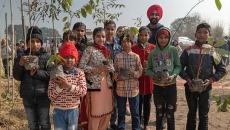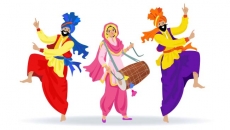Vaisakh, the second month in the Nanakshahi calendar, holds profound significance in Sikhism, marking both the arrival of spring and the harvesting season in Punjab. Falling between April 14 and May 15, Vaisakh symbolizes renewal, abundance, and hope. This month heralds the celebration of Vaisakhi, one of the most important festivals in the Sikh calendar. Vaisakhi commemorates the creation of the Khalsa by Guru Gobind Singh Ji in 1699. The festival is a vibrant display of Sikh culture and tradition, marked by Samagams, Nagar Kirtan, Gatka exhibitions, and Akand Paaths worldwide.
Moreover, Vaisakh holds significance in Sikh history as the birth month of Sahibzada Jujhar Singh, the second son of Guru Gobind Singh, born on April 9, 1691. Additionally, the birthdays of Guru Angad Dev Ji, the second Sikh Guru, and Guru Tegh Bahadur Ji, the ninth Sikh Guru, are celebrated on April 18 during this auspicious month. Furthermore, it is a time to remember the passing of Guru Angad Dev Ji and Guru Har Krishan Ji, who ascended their heavenly abodes, passing the Guruship to Guru Amar Das Ji and Guru Tegh Bahadur Ji, respectively.

Beyond its religious significance, Vaisakh encapsulates the spirit of rejuvenation and optimism as nature blossoms with new life. As the fields burgeon with the season's bounty, it symbolizes the promise of abundance and prosperity. The festival of Vaisakhi is a testament to the resilience and fortitude of the Sikh community, celebrating their heritage and values amidst the joys of spring.
In the larger context of the desi calendar, Vaisakh is not just a month but a tapestry interwoven with the threads of tradition, culture, and spirituality. Each month carries its own significance, reflecting the cyclical nature of life and the passage of time. In the Nanakshahi calendar, each month holds cultural and religious significance. The twelve months, or "maheene," are as follows: Chet, Visakh, Jeth, Harh, Sawan, Bhadon, Assu, Kattak, Maghar, Poh, Magh, and Phaggan.

These months correspond to various seasons and agricultural cycles, reflecting the rhythm of life in our communities. Each month is marked by festivals, religious observances, and cultural traditions that deepen the connection to heritage and spirituality. From the warmth of Chet to the monsoon showers of Sawan, the desi calendar mirrors the rhythm of existence, guiding individuals through the ebb and flow of seasons.
Ultimately, Vaisakh serves as a beacon of hope, inspiring individuals to embrace new beginnings and pursue their aspirations with vigor. As the earth awakens from its winter slumber, Vaisakh beckons us to embark on a journey of spiritual growth and self-discovery. It is a time to reflect on the teachings of the Gurus, honor our heritage, and rejoice in the boundless possibilities of the season.
I think we should publish some type of translation between regular calendar and desi calendar, like below:






